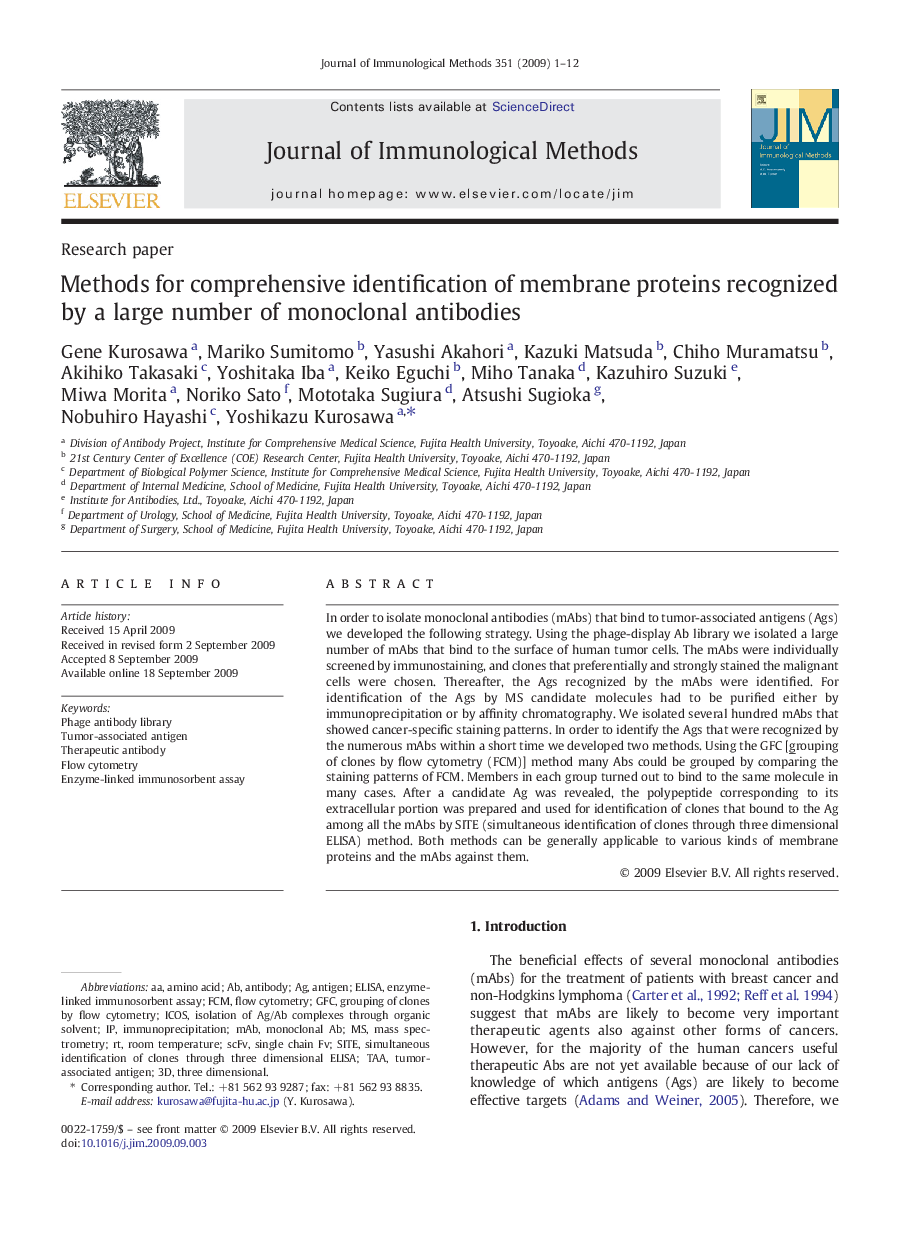| Article ID | Journal | Published Year | Pages | File Type |
|---|---|---|---|---|
| 2088658 | Journal of Immunological Methods | 2009 | 12 Pages |
In order to isolate monoclonal antibodies (mAbs) that bind to tumor-associated antigens (Ags) we developed the following strategy. Using the phage-display Ab library we isolated a large number of mAbs that bind to the surface of human tumor cells. The mAbs were individually screened by immunostaining, and clones that preferentially and strongly stained the malignant cells were chosen. Thereafter, the Ags recognized by the mAbs were identified. For identification of the Ags by MS candidate molecules had to be purified either by immunoprecipitation or by affinity chromatography. We isolated several hundred mAbs that showed cancer-specific staining patterns. In order to identify the Ags that were recognized by the numerous mAbs within a short time we developed two methods. Using the GFC [grouping of clones by flow cytometry (FCM)] method many Abs could be grouped by comparing the staining patterns of FCM. Members in each group turned out to bind to the same molecule in many cases. After a candidate Ag was revealed, the polypeptide corresponding to its extracellular portion was prepared and used for identification of clones that bound to the Ag among all the mAbs by SITE (simultaneous identification of clones through three dimensional ELISA) method. Both methods can be generally applicable to various kinds of membrane proteins and the mAbs against them.
